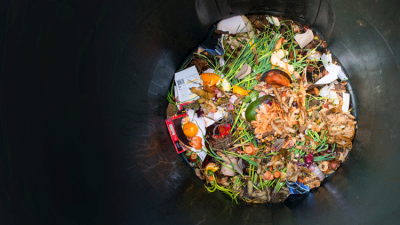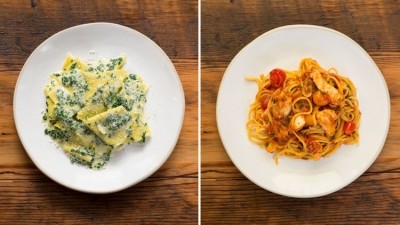10 ways to combat food cost inflation

The tone of the Brexit negotiations may be softening as a result of Theresa May’s election setback, but the Government still looks likely to leave the customs union, which will cause tariffs on food entering the country to shoot up dramatically. With Britain’s departure from the EU set for early 2019 this may seem a long way off, but it’s still worth getting used to effectively managing food price inflation right now.
“Smart operators have to find ways to mitigate these challenges and, where possible and appropriate, pass on some of these cost increases to customers,” says Mike Shipley, analytics and insights director at Fourth. “This is easier said than done, but few restaurant owners will regret spending proper time analysing and exploring how they might claw back profit in the face of these significant headwinds, given what can be achieved.”
1. Don’t suddenly put up prices
Revenue Management Solutions’ COO Mark Kuperman is an expert at analysing how menu price changes affect customer buying behaviour. His main bit of advice for managing food price inflation is to put prices up gradually. “For many restaurant operators, price increases are inevitable,” he says. “However, in an environment of increasing costs, this is much easier for customers to swallow if done in small increments over time, firstly focusing on non-sensitive items.”
2. Combat rising costs
Kuperman believes that restaurants should be turning to technology to increase efficiencies in all aspects of their operation. “The beauty of technology for operators is that it seamlessly steps in as a silent partner to take care of all aspects of the customer journey, leaving staff to deliver on that all-important experience,” he says.
3. Butcher meat on site
The biggest cost component of most recipes is the protein. One way to manage the rising cost of meat is to purchase whole sides of meat or even whole animals rather than individual cuts. “You need space to work, storage and skills but significant savings can be made.
It may even be cost-effective for some restaurants to train up a member of the team with the relevant skills to do this,” says Bidfood food development controller Ben Woodhouse. Slow cooking non-prime cuts can also make a big difference to margins, but Woodhouse recommends keeping an eye on market prices because costs can shoot up as demand fluctuates.
4. Trade up, charge more
Another way of switching products for greater profitability is to bring in premium products, advises cost control specialist Fourth. The drinks menu, for example, can offer opportunities to bring in higher-value brands, particularly in the beer and spirits category, and in doing so gives operators a chance to raise drinks prices (above and beyond) any associated cost increase, thus expanding margins.
5. Perfect your portions
“Try to ensure you are consistent in portion sizing across the board. This is particularly important when considering sides such as chips and carbohydrates in general since businesses can lose considerable margin if they are inconsistent or too generous,” says Woodhouse. Again, think beyond the norm and consider using pulses such as spelt, pearl barley or lentils to support protein-based meals since these pairings can allow for slightly smaller portions of meat or protein.
6. Scale back on fish
Relying on the big five seafood species – cod, salmon, tuna, haddock and prawns – isn’t great news for the environment and it’s even worse for the bottom line. “Seeking out alternative species based on what is widely available, rather than sticking to set menu staples, can help maintain a sustainable and cost-effective offering in the face of inflation,” says Woodhouse. “Frozen fish and produce is less subject to pricing volatility since it is bought and produced on a contract basis and can work well at managing both cost as well as waste.”
7. Reduce stock holdings
Fourth believes that operators should be looking to reduce stock holdings where possible – analysis can help pinpoint opportunities to intelligently reduce stock holding days and subsequently wastage on high value/short
shelf-life items, helping to close the gap between theoretical and actual GPs. It also means that operators potentially have less cash tied up in stock.
8. Be clever with cheese
Dairy prices are particularly unstable at the moment, with cheese prices currently up as much as 30% on last year. To combat this, Bidfood suggests thinking carefully when it comes to cheeses for cooking. For example, using an extra mature rather than a mature cheddar delivers more flavour for less weight in sauces. Parmesan and other premium Italian hard cheeses are expensive, and may not be the best option for dishes in which the cheese is to be cooked.
9. Offer value through promotions
Offering deals may seem nonsensical in a climate of rising costs, but Fourth advises using promotions as a tool to maintain menu prices for food sales. “Offer greater value through promotions but rather than discounting as such, which is rather blunt and can be counter-productive, consider bundling products together – a meal or a main and a glass or a bottle of wine perhaps,” says Shipley. “This gives the opportunity to hold menu price against food items that may be experiencing a squeeze on margin, and recouping this margin via the drink that you’re selling within the offer.”
10. Be smarter with purchasing
Can you switch between products or ingredients? One option is to benchmark ingredient inflation against each other and substitute (where practical) for less costly alternatives in recipes, while ensuring overall balance across the menu and not sacrificing quality, advises Fourth. Restaurateurs and groups can also benchmark their own cost-price inflation against independent industry benchmarking analysis – such as that conducted by the likes of Prestige Purchasing – to determine opportunities for strategic purchasing initiatives.
Analytics can be used to help calculate the monetary value and gross profit of potential opportunities in this area. There are buying clubs and co-operatives that give operators the chance to collaborate with other restaurateurs to buy on better terms. Trade associations can often provide access to such opportunities




















